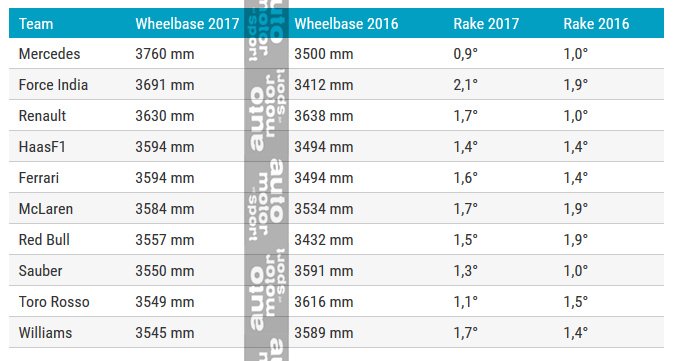GhostF1 wrote: ↑06 Nov 2017, 09:47
j.yank wrote: ↑06 Nov 2017, 08:45
makecry wrote: ↑06 Nov 2017, 00:55
No it doesnt .
Yes, it does.
Race Speed Traps from Mexico:
Fernando Alonso - McLaren Honda - 348.0 - 13:27:10.000
Max Verstappen - Red Bull Racing - 345.3 - 13:41:13
Qualification Speed Traps from Mexico:
Max Verstappen - Red Bull Racing - 345.7 - 13:05:40.000
Fernando Alonso - McLaren Honda - 344.4 - 13:08:53.000
GhostF1 wrote: ↑06 Nov 2017, 01:28
As a basic description of what is happening, you can expect Red Bull to be running a greater degree of downforce everywhere over the McLaren. I think we heard it like 4 times over the season from either Eric or Matt that McLaren have had to "remove wing" aka "lower overall downforce" as the Honda PU did not have enough grunt to push it through. If they were running a Red Bull matching aero setup you can expect those trap speeds to tumble pretty drastically.
The other explanation is that they have running high downforce but also they have high drag, not like RedBull. That's why RedBull are good all-around whereas McLaren are good only in sectors with slow corners. BTW, here we had number of post that contradict what said by Eric or Matt - like running high downforce on Monza against any logic. However, "over the season" is not relevant to the situation now.
So you are suggesting that only being quick in the slow corners is a demonstration of a high downforce car?.... Hmm
You are also suggesting that quotes from Eric and Matt are irrelevant...
You're also suggesting based solely on trap speed, you can extrapolate enough evidence to support a claim that the engines are similar. Just to clarify, that is basically what you are saying right?
Being quick in the slow corners, to me, would suggest an excellent chassis and setup, not aero potential. The fact two heads at McLaren are saying they aren't running downforce at levels they'd like, suggest there is a compromise somewhere. I doubt they are lying about their ability, there is nothing to gain there. And I think it's been done to death on this topic but trap speed basically means zero in terms of PU performance if looked at in isolation without accounting for other facts, some of which we aren't privy to.
Partly Correct. That's called mechanical grip.
Part 1 - Entry to a corner - Performance for any corner, slow, medium or fast, depends upon how a car arrives and with how much grip. If a slower corner, is actually the end of a long/fast straight, then good breaking performance and corner entry (with aero grip) matters a lot. If the slow corner is arriving after another slower corner, then it is all pure mechanical grip.
Part 2 - Mid corner stability (mix of both aero and mechanical).
Part 3 - Exit from a corner - Unlike fast corners, slow corners require good traction, which requires a great deal of mechanical grip. Regardless of how powerful an engine is (doesn't matter because you can't use full power of the car from an almost static position, without incurring wheelspin), throttle application has to go hand in hand with mechanical grip to avoid wheelspin, which is loss of performance. This is where Mercedes has been struggling with lack of mechanical grip to exit the slower corners.
Click to enlarge.

In the picture above, which is from Mexico, you can see both cars in action, at the same spot. You would see that the MCL32 is absolutey tight at the rear, but is running a Monkey seat, whereas RB13 isn't as tight as MCL32 is. RB13 is running a lot mroe rear wing than MCL32 AND having slightly higher AoA for front wing too. In a nutshell, RB13 is far more draggier than MCL32. The MCL32 is more rakier than RB13 (refer below). Should theoretically be able to setup with softer rear suspension, to provide better ride through the kerbs and cornering stability. In my layman knowledge, I would believe that, the MCL32 is, slightly better chassis than RB13. But that is also because of the fact that the Honda PU is tinier than Renault PU. Next year, the MCL33, should look slightly bigger at the rear too.




